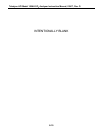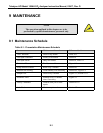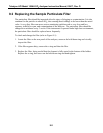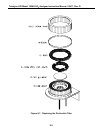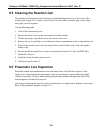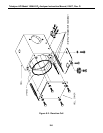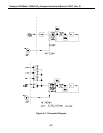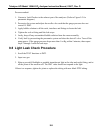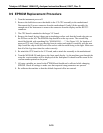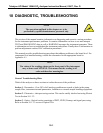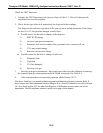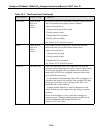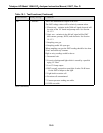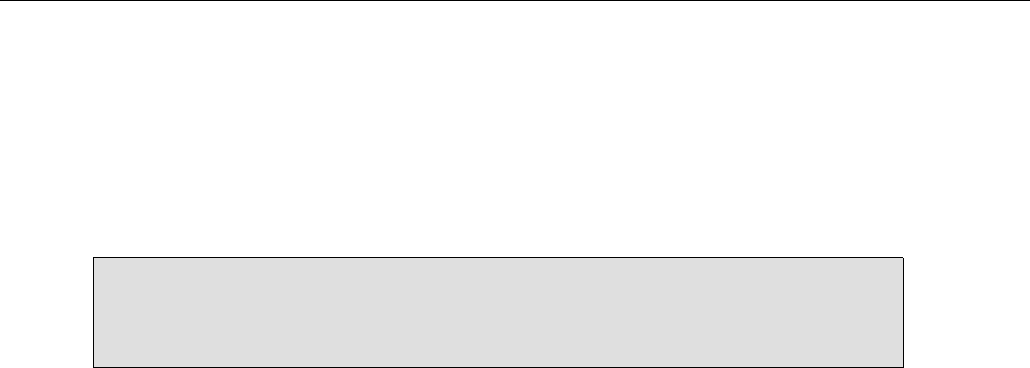
Teledyne API Model 100AH SO
2
Analyzer Instruction Manual, 02417, Rev. D
9.7 Leak Check Procedure
There are two methods of leak checking. The vacuum method is the simplest but it does not show
the location of a leak. This vacuum method described below is the general method when a Leak
Checker is not readily available. The other method is the pressure method. This can be used to find
the exact location of a leak by using bubble solution.
NOTE
Do not use a bubble solution during vacuum method as the
solution may enter and contaminate the cell.
Vacuum method (general check):
1. Cap the sample inlet port.
2. Set the TEST function to VACUUM pressure. Wait for stable reading and record the reading.
3. Unplug the power cord of the pump.
4. Observe the VACUUM pressure reading for about 30 seconds. It should be close (±0.2 in-
Hg) to the previous reading in step 2 if the pneumatic system including the pump is leak free.
The above method is a general method to check the pneumatic system when a leak checker is not
available. The above test checks the sensor pneumatic leak including the pump and therefore the
pump must be in good condition to hold the vacuum pressure. Perform the above test only when
a leak checker is not available.
If a Leak Checker is readily available, then use it in place of the pump to pull the vacuum. After
step 1 of above, pull the vacuum for about 20 in-Hg and close the shut off valve of the leak
checker and turn off the pump. If the pressure changes more than 1 in-Hg within 5 minutes, there
is a leak. It is not possible by the vacuum method to tell where the leak is located. See the
pressure method below to locate the leak.
9-8



